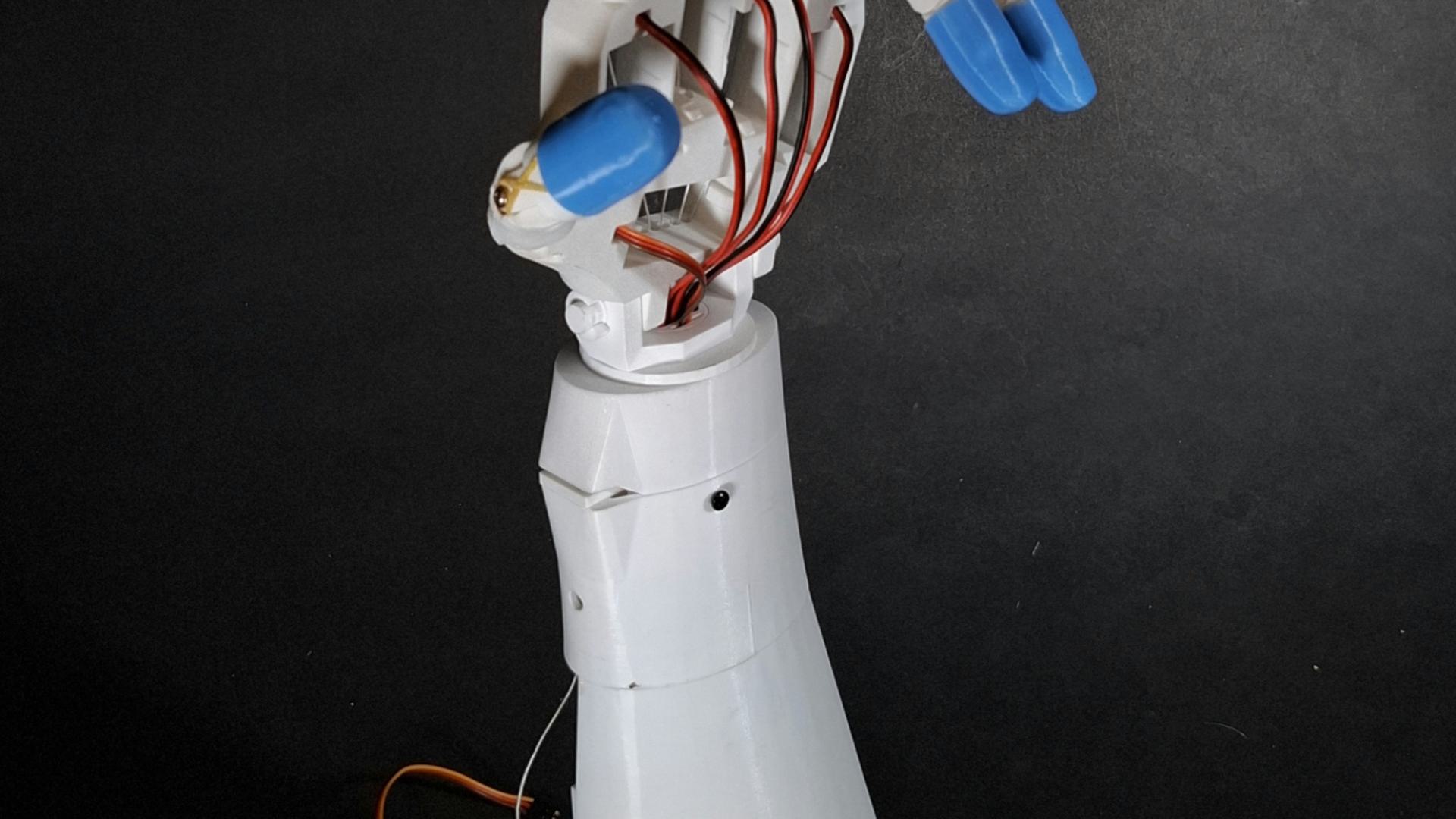Imitation Learning
Imitation Learning is a form of Machine Learning (ML) where robots learn by observing and mimicking human actions rather than following hard-coded instructions. For design-driven robotics, this opens exciting opportunities: prototypes with a more human touch, movements that feel natural, and interactions that respond intuitively to people. Yet for Industrial Design students, these methods remain out of reach. As there are no courses on this topic in the IDE curriculum, students who want to experiment are left to figure it out on their own. Existing resources are often too technical or fragmented. This project addresses that gap with a beginner-friendly, step-by-step guide that translates complex ML concepts into practical design tools. The project also aims to inspire educators to integrate AI-related topics into design courses, making new technologies part of future design practice rather than a separate technical field.
The Design Process
Faye de Groot is developing a structured, open-access guide that introduces Industrial Design students to prototyping with Imitation Learning. The guide builds on her own design process, which began with the ideation and 3D printing of a prosthetic hand. Electronics were integrated, programmed, and used to create a movable robotic prototype. To train it, a data collection setup is designed and tested, after which an Imitation Learning algorithm is trained and implemented on the hand, enabling it to reproduce human-like grasping behaviours such as power and precision grips. Each stage of this process—its successes, challenges, and insights—is documented and translated into a clear, step-by-step framework. In addition to practical instructions, the guide explains key principles and offers strategies for adapting the approach to other projects. The resource is continuously refined through layout improvements and user testing with Industrial Design students to ensure clarity, accessibility, and educational value.
Educational Impact
The project demonstrates the potential of Imitation Learning as an accessible entry point for design students to integrate AI into their prototyping practice. By turning a complex technical process into a structured guide, it lowers barriers and encourages creative experimentation with robotics. As Artificial Intelligence becomes increasingly impactful in society and everyday products grow smarter, design education must evolve alongside it. Design students need to understand how AI can add value, enhance interaction, and shape new product experiences. However, several limitations remain. Even with clear instructions, students may face errors caused by differences in sensors, wiring mistakes, or coding issues—problems the guide cannot always resolve. Moreover, building a functioning IL prototype requires more time and effort than producing a mock-up. As the guide is still developing, it will continue to evolve with new hardware, software, and insights. Despite these challenges, it lays a strong foundation for future-oriented, AI-integrated design education.
 Free wifi available
Free wifi available
 Toilets available
Toilets available
 Fully wheelchair accessible
Fully wheelchair accessible
 Wheelchair friendly toilet available
Wheelchair friendly toilet available


